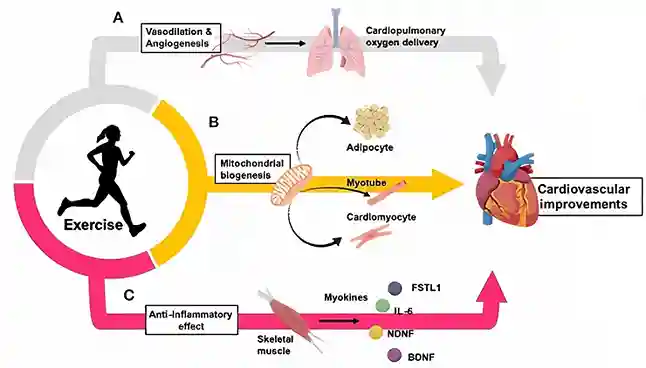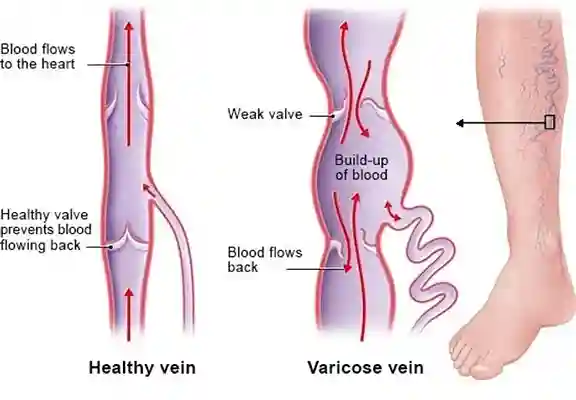Every coin has two sides, like every living thing on this planet, one is life, and the other is death. And almost every one of us is aware of these two sides. But the good thing is that instead of focusing on the end, we always focus on life. This article will uncover some myths and facts about the side effects of 10k steps walk and the health benefits of 10k steps every day.
Walking 10,000 steps every day is associated with health benefits such as reducing the risk of heart disease, type 2 diabetes, high blood pressure, depression, etc. But like I said, the other side, so let’s find out in this article below.
Table of Contents
Benefits of Walking 10k steps every day

- Helps in Weight loss
- Improves Heart Health
- Prevents disability in Old age
- Improves Varicose veins
- Boosts immunity
- Aid in digestion
- Improve Mental health
- Reduce Chronic Diseases
- Prevent diabetes risk
- Prevent Cancer
- Lower Blood Pressure
- Reduce stroke risk in women
- Delays Aging
- Increase Lung Capacity
- Sugar Cravings are lowered
- Improves mood
Helps in Weight loss.
Being overweight is indeed a silent pandemic, which opens the door to many chronic diseases, so asking how to lose weight is quite apparent. According to research walking 10,000 steps every day is associated with weight loss [1]. It is all about burning some extra calories from the body to maintain overall health; For example, if a person walks for 30 minutes a day, they can burn an extra 150 calories, and walking also increases metabolism, which is associated with speeding up digestion.
Improves Heart Health

Research published in Frontiers in Cardiovascular Medicine shows a clear picture of improvements in heart health from walking and exercise in the picture below.
Prevents disability in Old age
According to research evidence, walking 5 to 7 days a week reduces the chance of disability by 50-80% [2].
Improves Varicose veins

What are varicose veins? Seeing its improvement, this question may arise in your mind, so let me clarify about varicose veins.
There are two veins in our feet, deep and superficial. Deep veins act like pumps. When you walk, it pushes oxygen-poor blood upwards toward the heart [3]. The superficial vein is usually found just under the skin and helps carry blood from the skin, fat tissue, and muscles to the deep veins [3].
Boosts immunity
Walking is a great way to improve blood flow, which has itself a great call for walking health benefits it prevents hypertension and reduces stress and inflammation. In research, it found that walking helps in blood circulation, which makes white blood cells reach around the body where needed.
Aid in digestion
Indigestion is a major concern as more than a billion people suffer from bloating, gas, and acid reflux; for some reason, some may experience heartburn. In a recent interview, nutritionist Sobin S. Gupta said that these problems are generally increasing because people eat for taste rather than hunger. Many people believe that walking after a meal is bad for health. Yet, one published study suggests that walking immediately after a meal is more effective at reducing weight than waiting hours to walk after a meal. This can be bad for some people with a medical condition.
Improve Mental health
WHO presents an alarming number of global mental health issues; nearly 1 billion people out of 8 billion people in the world have a mental disorder. The direct or indirect way this problem can’t be ignored if one wants to live without hypertension or depression because of poor mental health. Finding the answer to how to cure mental health naturally can be easy.

As per the research, it was found that walking is a great way to enhance the emotional health of individuals. To improve or prevent mental disorders, a regular high-intensity workout is not necessary if a person has an average number of walks per week; scientifically, it positively affects mental health [4].
Reduce Chronic Diseases
Chronic diseases can be termed lifestyle diseases, such as high blood pressure, type 2 diabetes, obesity, stroke, cancer, etc. An inactive lifestyle mainly causes it. Is chronic disease curable? This question is prevalent, having said that chronic disease can be maintained but not completely cured [5]. Incorporating regular brisk walking into the lifestyle may improve overall health, including fewer chronic diseases [6].
Delays Aging
How to slow the aging process? Scientists at the University of Leicester found that people who walk faster found more effective in slowing the aging process. For example, a lifetime of brisk walking can reduce their biological age by 16 years [7].
Increase Lung Capacity
A recent pandemic, Covid19, taught a lesson about the importance of health. Now when you think about lungs specifically, the numbers are increasing yearly. According to WHO, chronic obstructive pulmonary disease (COPD) was the world’s third leading cause of death in 2019 alone; 3.23 million people died due to lung damage.

Best 7 days Intermittent fasting diet plan Indian

The Truth About Calorie Counting: Balancing Weight Loss and Mental Health
Finding the actual cause of lung disease is the first step to avoiding any condition in the future, but what causes lung disease? I think we should find out. Lung disease is more famous because of smoking, radon, asbestos, and air pollution. According to Hopkins Medicine, COVID-19 causes lung complications such as pneumonia which causes lasting damage to the lungs and other organs.
But the question is how to strengthen the lungs. In researching this question, I came across the American Lung Association, which indicates that proper functioning of oxygen delivery within the body strengthens the heart and lungs and is commonly found in a person who exercises regularly. Remains active in walking. It makes your lungs and heart work harder to supply extra oxygen on demand, and this process makes the lungs stronger [8].
Sugar Cravings are lowered.
Walking can help reduce stress and improve mood, which can in turn, help reduce sugar cravings. Stress and negative emotions can sometimes lead us to crave sugary foods as a way to cope or feel better. Walking can help improve our mood and reduce stress, which can make us less likely to turn to sugary foods for comfort.
Finally, walking can help increase the production of certain hormones in our bodies that can help regulate appetite and reduce cravings for sugary foods. For example, walking can increase the production of endorphins, which are hormones that can help improve mood and reduce cravings for unhealthy foods.
It’s worth noting that while walking can be a helpful tool in reducing sugar cravings, it is just one factor among many that can influence our cravings. A healthy, balanced diet and regular physical activity are important for overall health and can help reduce cravings for sugary foods.

Improves mood
Here are a few ways in which walking can improve mood:
Reduces stress: Walking can help reduce stress by activating the body’s relaxation response. It can also help clear the mind and provide a sense of calm.
Increases endorphins: Walking can increase the production of endorphins, which are chemicals in the brain that help improve mood and reduce feelings of stress and anxiety.
Improves sleep: Walking can help improve sleep by providing a sense of relaxation and helping to tire out the body.
Increases social interaction: Walking can provide opportunities for social interaction, which can help improve mood and reduce feelings of loneliness or isolation.
Increases self-esteem: Regular walking can help improve self-esteem and body image by improving physical fitness and health.
It’s worth noting that while walking can be a helpful tool for improving mood, it is just one factor among many that can influence our mental well-being. A healthy, balanced diet, regular physical activity, and good sleep habits are all important for overall mental health and well-being.
Side Effects of Walking 10,000 Steps Every Day:
Walking is a low-impact exercise that is generally safe for most people. Some potential side effects of regular walking may include the following:
Muscle soreness: As with any exercise, it is normal to experience muscle soreness after walking, especially if you are new to the activity or have increased your distance or intensity. This soreness should resolve on its own within a few days.
Blisters: If you are wearing shoes that do not fit properly or are not suitable for walking, you may develop blisters on your feet.
Dehydration: It is important to stay hydrated while walking, especially if you exercise for an extended period or in hot or humid conditions. Dehydration can cause symptoms such as thirst, fatigue, and dizziness.
Risk of injury: As with any physical activity, there is a risk of injury while walking, such as sprains, strains, and fractures. To reduce the risk of injury, it’s essential to wear appropriate footwear, stretch before and after running, and pay attention to your body’s limits.

Overall, the benefits of regular walking far outweigh the potential risks or side effects. The takeaway from walking 10,000 steps per day is a recommended goal for maintaining good physical health and fitness. This level of activity has been shown to have numerous benefits, including improving cardiovascular health, helping to maintain a healthy weight, and reducing the risk of chronic diseases such as diabetes and heart disease. Walking 10,000 steps per day can also improve mental health and mood and increase energy levels [9]. While it is important to consult with a Nutritionist or healthcare provider before starting any new exercise program, walking 10,000 steps per day is generally safe and achievable for most people.





